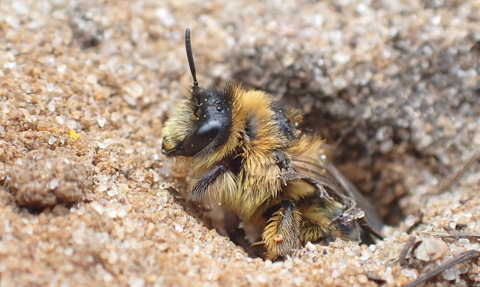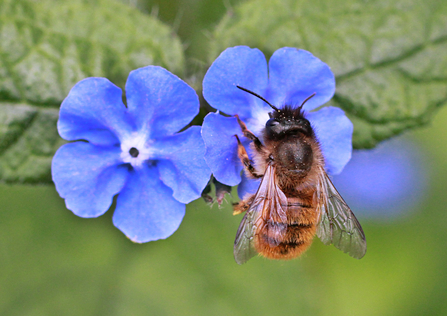
Pantaloon bee emerging from burrow - Ryan Clark
Ancient building blocks
The quarry, on the south-west side of the Hill overlooking Tuffley, was once home to the Whitfield Brick and Tile Works.
Originally built in the early 1890’s, clay from the quarry was used to make bricks that can still be seen in many buildings across the city. The works were used until the 1950's, when larger brick works outcompeted them.
Bees that live in bricks
Your walls can provide a home for wildlife, and not just by installing a bird box. Some types of bees make use of spaces found between bricks.

Red mason bee (c) Penny Frith
The red mason bee is known for doing this, and can be found throughout the UK in towns and cities. These bees find existing holes or cracks in walls, and create nests containing eggs, pollen and nectar. These are then sealed, often with mud, to keep young safe and fed until they are ready to emerge.
Help wildlife in your home
We believe everyone should have the opportunity to take action for wildlife and nature, no matter your living situation. We have lots of ideas for how you can make space for wildlife at home, even if you don't have a garden. Why not take up out 'no garden no problem' challenges.
Take action in the garden
If you are luckily enough to have garden... you can make it a wildlife haven. Gardens are really important in helping to look after nature. The UK has seen over 50 species of insect go extinct since the 1900s, and house sparrow numbers have gone down by over 60% since the 1960s. You can make a difference by making your garden a home for wildlife.
